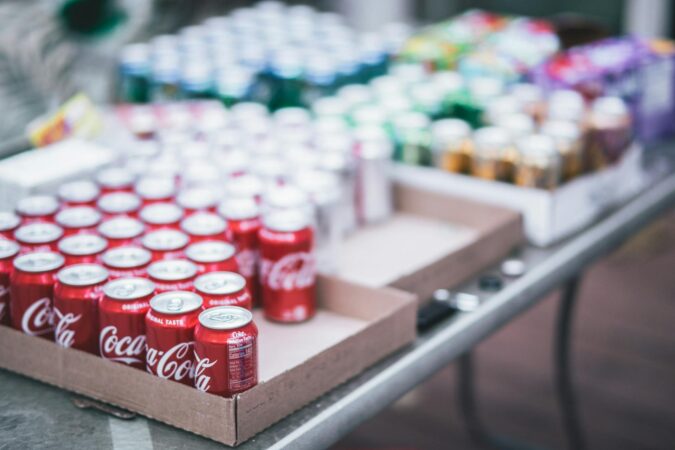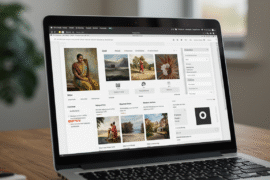This article may contain references to products or services from one or more of our advertisers or partners. We may receive compensation when you click on links to those products or services. Nonetheless, our opinions are our own.
- How Trump’s Metal Tariffs Could Raise the Price of Food and Beer Cans
- What Tariffs Are and How They Influence Costs
- The Industrial Chain Reaction
- Smaller Breweries Face Greater Strain
- Shifts in Consumer Behavior
- Packaging Adaptations and Possibilities
- Economic Impact Beyond Beverage Aisles
- What Shoppers Can Do
- Frequently Asked Questions
- Recommended Reads
How Trump’s Metal Tariffs Could Raise the Price of Food and Beer Cans
Each time a can of beer is opened or a soda is chilled for a warm afternoon, the aluminum container rarely draws attention. Yet, this often-overlooked piece of packaging may soon carry a higher price tag not due to the drink inside, but because of changes in trade policy. Recent tariffs on imported metals are beginning to influence production costs in ways that ultimately reach consumers.
What Tariffs Are and How They Influence Costs
Tariffs are taxes imposed on imported goods. Governments often apply them to encourage domestic production or shift global trade patterns. During the Trump administration, tariffs were introduced on imported aluminum and steel, both of which are fundamental to many manufacturing sectors. Aluminum, in particular, is widely used in the production of beverage and food cans. When tariffs increase the cost of imported aluminum, the financial burden on manufacturers grows. Rather than absorbing these rising costs, producers typically adjust their pricing, and those adjustments appear on the store shelf.
The Industrial Chain Reaction
The financial pressure begins with aluminum suppliers and moves through multiple layers of the economy:
- Manufacturers pay higher aluminum prices for use in can production.
- Distributors and retailers reassess pricing strategies in response.
- Consumers face increased prices on canned beverages and foods.
A policy decision enacted at the federal level can eventually shape what shoppers pay for common items in their local grocery store.
Smaller Breweries Face Greater Strain
Independent and craft brewers may be hit harder than large beverage companies. Their scale is smaller, margins are tighter, and negotiating power is limited. Tariffs on aluminum leave them with few choices:
- Absorb rising material costs and accept reduced profitability.
- Pass costs to consumers, risking a loss of market share.
- Explore alternative packaging or scale down operations.
Some may consider shifting to refillable containers or glass bottles. However, those alternatives involve distribution and environmental trade-offs, and not all businesses are equipped to make the change.
Shifts in Consumer Behavior

When prices climb, consumers often respond by reevaluating their purchasing decisions. For beverage buyers, this might mean choosing lower-cost brands, reducing consumption, or switching to items packaged differently. Retail trends have shown that even small increases in everyday goods can trigger noticeable shifts in buying habits. For companies already competing in a crowded market, this shift adds another level of complexity.
Packaging Adaptations and Possibilities
Though aluminum remains dominant for its recyclability, strength, and light weight, pricing pressure may encourage innovation in packaging. These changes could appear in several forms:
- Increased use of domestically recycled aluminum.
- Refillable containers, particularly in local or small-scale settings.
- Alternative materials such as biodegradable containers are under early-stage development.
While none of these options are widely deployed yet, economic shifts often speed up adoption, particularly when cost control and sustainability intersect.
Economic Impact Beyond Beverage Aisles
Tariffs often affect more than their immediate targets. In this case, increased costs on aluminum ripple through manufacturing, packaging, and consumer behavior. These effects can stretch into other industries.
- Consumer spending may soften as common goods become more expensive.
- Businesses facing higher costs may scale back hiring or investment.
- Reduced discretionary income can affect sectors reliant on steady consumer activity.
History offers useful comparisons. The Smoot-Hawley Tariff Act of 1930 raised duties on a wide range of imports. In response, other countries retaliated, which contributed to a dramatic decline in international trade and deepened the Great Depression.
What Shoppers Can Do
While policy decisions are beyond consumer control, there are ways to reduce their impact at the household level:
- Watch for seasonal promotions and bulk purchase opportunities.
- Support local brewers and food producers who may face fewer international sourcing costs.
- Consider experimenting with new brands that offer better value.
A combination of planning and flexibility can help offset the subtle, ongoing rise in prices tied to global trade dynamics.
Frequently Asked Questions
How do Trump’s metal tariffs affect can prices?
By placing taxes on imported aluminum, tariffs raise the material costs for can production. These increases are typically passed on to the consumer.
Which products are most affected?
Canned beverages such as beer and soda, as well as canned foods like soups and vegetables, are among the most directly impacted due to their reliance on aluminum.
Do large manufacturers face the same pressure as smaller ones?
Larger producers can often absorb or offset cost increases more easily. Smaller breweries and independent food manufacturers tend to feel the impact more directly due to limited scale and pricing power.
Are there viable alternatives to aluminum cans?
Glass and plastic are available alternatives, but they bring challenges in terms of sustainability, cost, and transportation efficiency. Refillable packaging has potential in limited contexts but is not a universal replacement.
Could this situation influence other areas of the economy?
Yes, price increases driven by tariffs can reduce consumer confidence and discretionary spending. This may, in turn, affect jobs, investment, and economic momentum in connected industries.

Reviewed and edited by Albert Fang.
See a typo or want to suggest an edit/revision to the content? Use the contact us form to provide feedback.
At FangWallet, we value editorial integrity and open collaboration in curating quality content for readers to enjoy. Much appreciated for the assist.
Did you like our article and find it insightful? We encourage sharing the article link with family and friends to benefit as well - better yet, sharing on social media. Thank you for the support! 🍉
Article Title: How Trump’s Tariffs Could Raise Food and Beer Can Prices
https://fangwallet.com/2025/07/07/how-trumps-tariffs-could-raise-food-and-beer-can-prices/The FangWallet Promise
FangWallet is an editorially independent resource - founded on breaking down challenging financial concepts for anyone to understand since 2014. While we adhere to editorial integrity, note that this post may contain references to products from our partners.
The FangWallet promise is always to have your best interest in mind and be transparent and honest about the financial picture.
Become an Insider

Subscribe to get a free daily budget planner printable to help get your money on track!
Make passive money the right way. No spam.
Editorial Disclaimer: The editorial content on this page is not provided by any of the companies mentioned. The opinions expressed here are the author's alone.
The content of this website is for informational purposes only and does not represent investment advice, or an offer or solicitation to buy or sell any security, investment, or product. Investors are encouraged to do their own due diligence, and, if necessary, consult professional advising before making any investment decisions. Investing involves a high degree of risk, and financial losses may occur including the potential loss of principal.
Source Citation References:
+ Inspo
There are no additional citations or references to note for this article at this time.












































